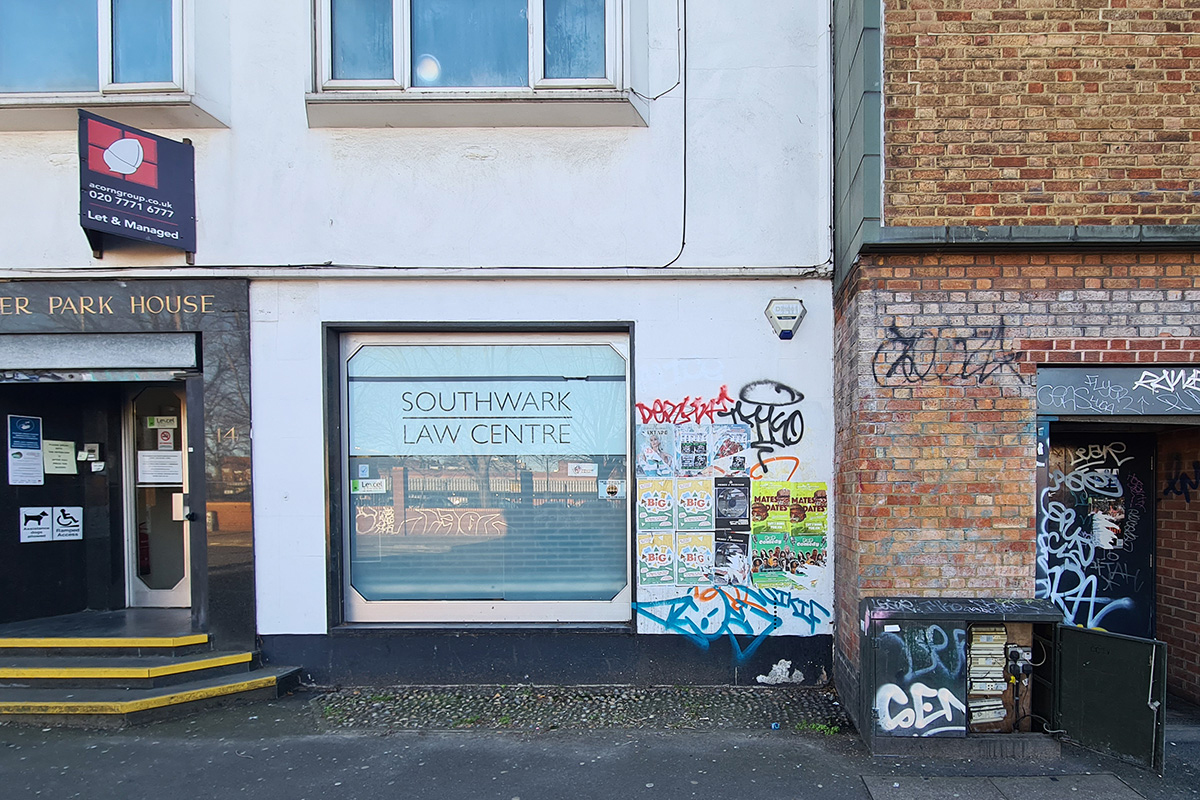You are viewing 1 of your 1 free articles
As legal aid lawyers, we are desperately looking for a long-term housing solution
We cannot keep firefighting for our clients; we need government investment in council housing, writes Saskia O’Hara, legal caseworker and community legal organiser at the Public Interest Law Centre
Why is council rent disappearing from the vocabulary of housing providers?
This was one of the questions we asked Dr Joe Penny, associate professor at UCL’s Urban Laboratory, when commissioning research into the deficit of workable solutions for the low-income communities the Public Interest Law Centre supports.
Dr Penny’s report, The promise of cross-subsidy: Why estate demolition cannot solve London’s housing emergency, revealed the alarming reality of cross-subsidy estate redevelopment. Across six examples of the best and worst estate redevelopments, council and social rent increased by an average of more than £80 per week and there was an overall net loss of 2,151 truly affordable council homes.
Dr Penny uses the term “truly affordable” in reference to UN-Habitat’s definition: rent that costs no more than 30% of a household’s total monthly income. Held to this standard, the UK’s affordable housing products fall well short.
The report shows that, for example, an individual affected by the benefit cap living on the Aylesbury Estate, paying social rent, will be spending 55% of their income on rent. This is almost double that of the UN definition. This is set to rise further as the government plans to raise social rents over the next 10 years. Campaign groups and charities have accused it of “aligning with landlords” and “heaping misery on families”.
This is not the first time the cross-subsidy model has come under fire. In 2019, an Inside Housing comment asked Is cross-subsidy dead or resting? The answer: “Housing leaders lined up... to warn that the current system of cross-subsidy is no longer working.”
“Our clients are now learning about cross-subsidy and how it creates huge disparities between expensive affordable housing products championed by our government and what is truly affordable for them”
According to estate residents from across the country who reach out to us weekly, this broken system is alive and well. Residents are worried about plans to redevelop their estates using the same cross-subsidy regeneration model driven by private developers, housing associations and local authorities.
We commissioned this report to validate what residents have been telling us: “Our council housing is becoming more expensive”; “We don’t understand these so-called affordable options or how they compare to what we have now”; and “We don’t believe our current homes will be replaced like-for-like”.
Sadly, the findings confirm their fears.
Our clients are now learning about cross-subsidy and how it creates huge disparities between expensive affordable housing products championed by our government and what is truly affordable for them. They are asking why council rent housing has dropped from the language of solution-seekers. Why are affordable housing products for middle-income earners being prioritised when there are 145,800 children in temporary accommodation – up 15% in a year?
They are shouting from the rooftops that they want to keep their homes and their estates standing – retrofitting and refurbishment over community and environmental destruction.
At the launch of the report, Egwolo Ekregbesi, a resident of the Carpenters Estate in Newham, east London, described the housing crisis from the point of view of a temporary tenant living on an estate facing cross-subsidy redevelopment.
“It’s like you’re watching a film and there’s a car on the train tracks with someone inside struggling to get out as a train speeds towards them… they are trying everything but the door handle… and you are screaming at the screen for them to just use the handle and open the door!”
“It means standing up against the chancellor’s absurd proposal to raise social rents, which could eliminate the possibility of truly affordable housing for good”
What does opening the door mean? It means directly challenging the lack of long-term funding for council rent homes, social rent homes and for retrofit. It means standing up against the chancellor’s absurd proposal to raise social rents, which could eliminate the possibility of truly affordable housing for good.
We know many are already calling for this and hope that this report can help put a stop to what we all already know: cross-subsidy models work for investors, but not for communities.
The revision of the National Planning Policy Framework presents an opportunity to tackle the decline in council rent housing and establish housing targets that fully align with local needs. Maintaining the status quo response to the housing crisis is good for no one aside from profiteers.
We need to rip the plaster off and collectively demand long-term government funding, rather than relying on private financing and failing cross-subsidy models.
Saskia O’Hara, legal caseworker and community legal organiser, Public Interest Law Centre
Sign up for our regulation and legal newsletter
Already have an account? Click here to manage your newsletters













